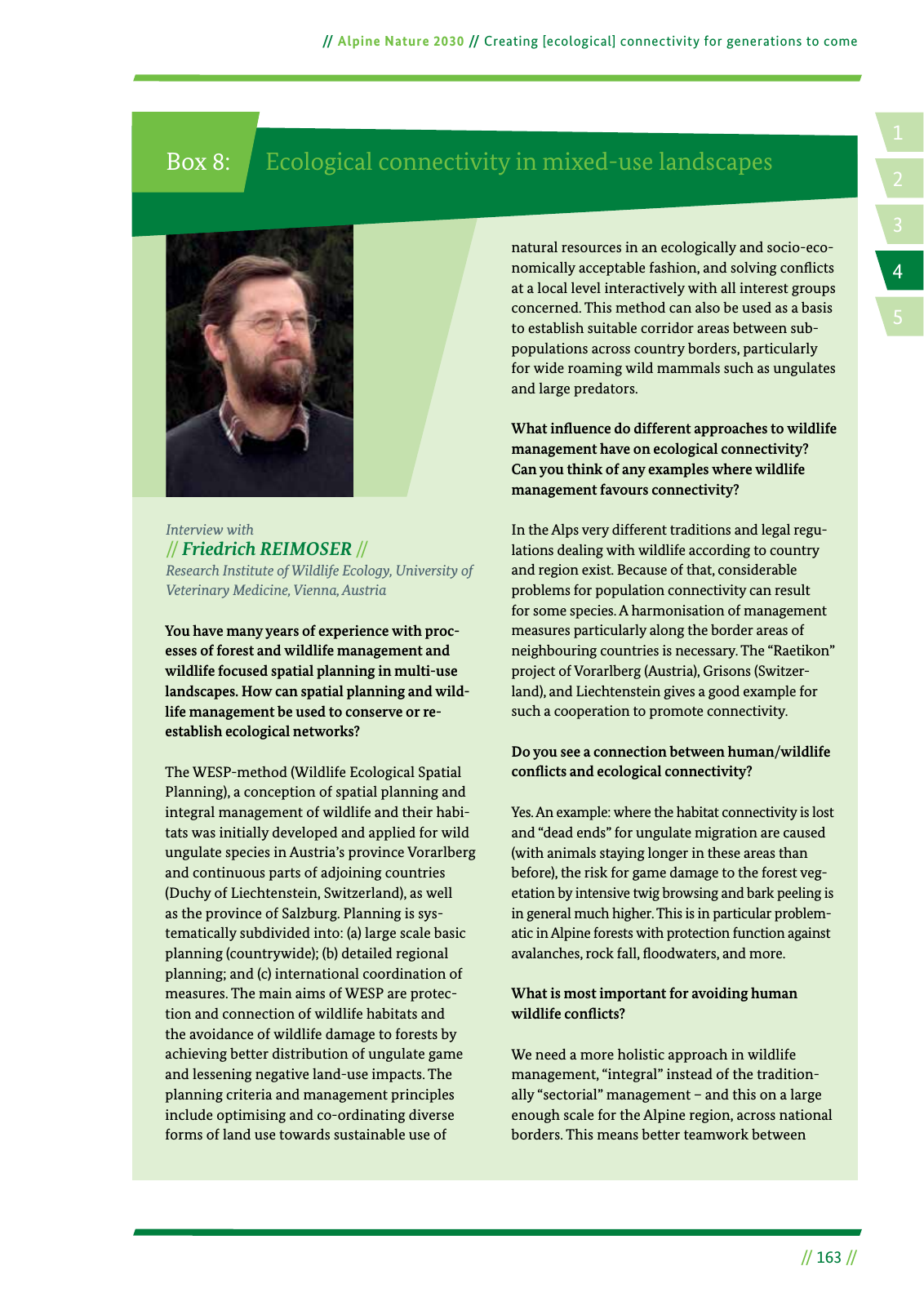14 2 5 3 Alpine Nature 2030 Creating ecological connectivity for generations to come 163 You have many years of experience with proc esses of forest and wildlife management and wildlife focused spatial planning in multi use landscapes How can spatial planning and wild life management be used to conserve or re establish ecological networks The WESP method Wildlife Ecological Spatial Planning a conception of spatial planning and integral management of wildlife and their habi tats was initially developed and applied for wild ungulate species in Austria s province Vorarlberg and continuous parts of adjoining countries Duchy of Liechtenstein Switzerland as well as the province of Salzburg Planning is sys tematically subdivided into a large scale basic planning countrywide b detailed regional planning and c international coordination of measures The main aims of WESP are protec tion and connection of wildlife habitats and the avoidance of wildlife damage to forests by achieving better distribution of ungulate game and lessening negative land use impacts The planning criteria and management principles include optimising and co ordinating diverse forms of land use towards sustainable use of natural resources in an ecologically and socio eco nomically acceptable fashion and solving con icts at a local level interactively with all interest groups concerned This method can also be used as a basis to establish suitable corridor areas between sub populations across country borders particularly for wide roaming wild mammals such as ungulates and large predators What in uence do different approaches to wildlife management have on ecological connectivity Can you think of any examples where wildlife management favours connectivity In the Alps very different traditions and legal regu lations dealing with wildlife according to country and region exist Because of that considerable problems for population connectivity can result for some species A harmonisation of management measures particularly along the border areas of neighbouring countries is necessary The Raetikon project of Vorarlberg Austria Grisons Switzer land and Liechtenstein gives a good example for such a cooperation to promote connectivity Do you see a connection between human wildlife con icts and ecological connectivity Yes An example where the habitat connectivity is lost and dead ends for ungulate migration are caused with animals staying longer in these areas than before the risk for game damage to the forest veg etation by intensive twig browsing and bark peeling is in general much higher This is in particular problem atic in Alpine forests with protection function against avalanches rock fall oodwaters and more What is most important for avoiding human wildlife con icts We need a more holistic approach in wildlife management integral instead of the tradition ally sectorial management and this on a large enough scale for the Alpine region across national borders This means better teamwork between Interview with Friedrich REIMOSER Research Institute of Wildlife Ecology University of Veterinary Medicine Vienna Austria Box 8 Ecological connectivity in mixed use landscapes

Hinweis: Dies ist eine maschinenlesbare No-Flash Ansicht.
Klicken Sie hier um zur Online-Version zu gelangen.
Klicken Sie hier um zur Online-Version zu gelangen.